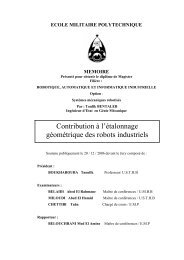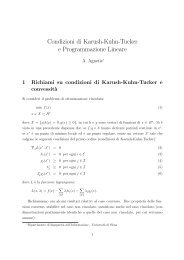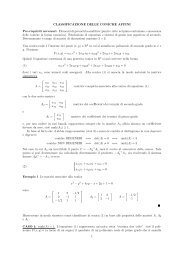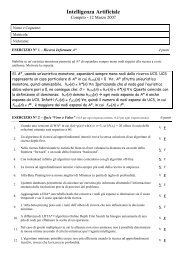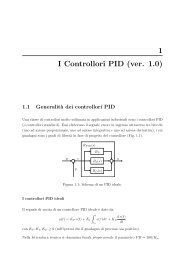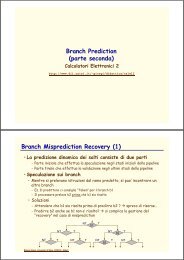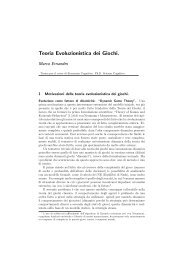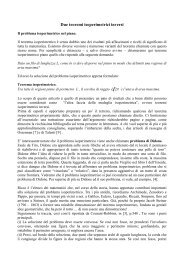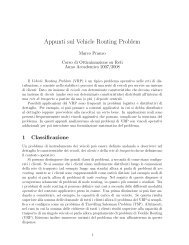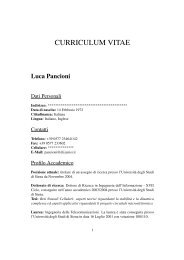Dispense del corso - Dipartimento Ingegneria dell'Informazione ...
Dispense del corso - Dipartimento Ingegneria dell'Informazione ...
Dispense del corso - Dipartimento Ingegneria dell'Informazione ...
You also want an ePaper? Increase the reach of your titles
YUMPU automatically turns print PDFs into web optimized ePapers that Google loves.
posto kf = − k0f0<br />
2C ′ si ottiene l’espressione <strong>del</strong> segnale trasmesso<br />
<br />
su(t) = s0cos(2π<br />
fi(t)dt) = s0cos(2πf0t + 2πkf<br />
Facoltà di <strong>Ingegneria</strong> 72<br />
<br />
s(t)dt) (5.37)<br />
Figura 5.6: a) Modulatore di Hartley; b) rappresentazione equivalente con capacità C ′′<br />
funzione <strong>del</strong> segnale informativo; c) rappresentazione equivalente con un’unica capacità C<br />
5.3.2 Modulatori FM Indiretti (Modulatore di Armstrong)<br />
Un circuito molto utilizzato nelle applicazioni pratiche è rappresentato dal<br />
Modulatore di Armstrong, mostrato schematicamente nella figura 5.7(a). Questo<br />
modulatore, che effettua una modulazione di fase, può operare correttamente<br />
soltanto per bassi valori <strong>del</strong>l’indice di modulazione. Tuttavia, attraverso<br />
opportuni accorgimenti, si può togliere questa restrizione. Il circuito<br />
di figura 5.7(a) utilizza un modulatore prodotto ed il segnale y(t) all’uscita<br />
<strong>del</strong> sommatore risulta:<br />
y(t) = V0cos(2πf0t) + V0k · s(t)sen(2πf0t). (5.38)<br />
La rappresentazione grafica <strong>del</strong> segnale y(t) è mostrata nella figura 5.7(b). Il<br />
segnale y(t) può essere espresso nella forma<br />
y(t) = R(t)cos(2πf0t − Ψ(t)). (5.39)<br />
dove <br />
R(t) = V0 1 + k2 · s2 (t)<br />
Ψ(t) = atan(k · s(t))<br />
(5.40)



